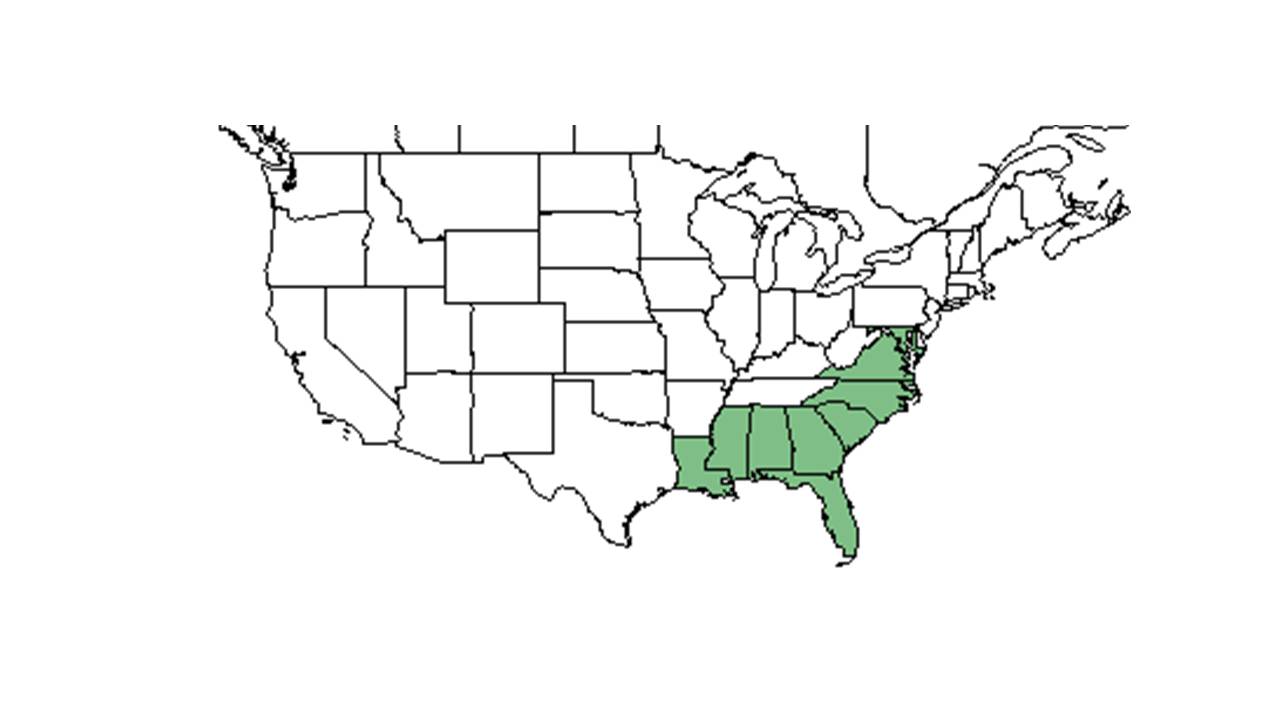Difference between revisions of "Desmodium tenuifolium"
KatieMccoy (talk | contribs) |
|||
| Line 29: | Line 29: | ||
This species is also found in wiregrass savannas, mesic woodlands, flatwoods, pond margins, and longleaf pine forests (FSU Herbarium). It also occurs in disturbed areas such as roadsides and clear-cuts (FSU Herbarium). It generally prefers semi-shaded habitats with dry to moist sandy soils, including loamy sand, sand, and sandy peat (FSU Herbarium). | This species is also found in wiregrass savannas, mesic woodlands, flatwoods, pond margins, and longleaf pine forests (FSU Herbarium). It also occurs in disturbed areas such as roadsides and clear-cuts (FSU Herbarium). It generally prefers semi-shaded habitats with dry to moist sandy soils, including loamy sand, sand, and sandy peat (FSU Herbarium). | ||
| + | |||
| + | Associated species include wiregrass, slash pine, saw palmetto, longleaf pine (FSU Herbarium). | ||
===Phenology=== <!--Timing off flowering, fruiting, seed dispersal, and environmental triggers. Cite PanFlora website if appropriate: http://www.gilnelson.com/PanFlora/ --> | ===Phenology=== <!--Timing off flowering, fruiting, seed dispersal, and environmental triggers. Cite PanFlora website if appropriate: http://www.gilnelson.com/PanFlora/ --> | ||
Revision as of 12:38, 22 October 2015
| Desmodium tenuifolium | |
|---|---|
Error creating thumbnail: Unable to save thumbnail to destination
| |
| Scientific classification | |
| Kingdom: | Plantae |
| Division: | Magnoliophyta - Flowering plants |
| Class: | Magnoliopsida – Dicotyledons |
| Order: | Fabales |
| Family: | Fabaceae ⁄ Leguminosae |
| Genus: | Desmodium |
| Species: | D. tenuifolium |
| Binomial name | |
| Desmodium tenuifolium Torr. & A. Gray | |

| |
| Natural range of Desmodium tenuifolium from USDA NRCS Plants Database. | |
Common name: slimleaf ticktrefoil
Contents
Taxonomic notes
Description
Distribution
Ecology
Habitat
D. tenuifolium is found in mesic and dry type savanna in North Carolina. Mesic savannas in North Carolina consist exclusively of Pinus palustris. Dry savannas in North Carolina typically occur on the high, central portion of the more dome-shaped islands, or where the soil is coarse textured and well drained. These habitat types require frequent burns.[1]
This species is also found in wiregrass savannas, mesic woodlands, flatwoods, pond margins, and longleaf pine forests (FSU Herbarium). It also occurs in disturbed areas such as roadsides and clear-cuts (FSU Herbarium). It generally prefers semi-shaded habitats with dry to moist sandy soils, including loamy sand, sand, and sandy peat (FSU Herbarium).
Associated species include wiregrass, slash pine, saw palmetto, longleaf pine (FSU Herbarium).
Phenology
Flowering has been observed in September and October, and fruiting has been observed in July, September, October, and November (FSU Herbarium).
Seed dispersal
Seed bank and germination
Fire ecology
This species is found in savannas that are frequently burned[1]
Pollination
Use by animals
Diseases and parasites
Conservation and Management
Cultivation and restoration
Photo Gallery
References and notes
Florida State University Robert K. Godfrey Herbarium database. URL: http://herbarium.bio.fsu.edu. Last accessed: June 2014. Collectors: Loran C. Anderson, J.P. Gillespie, R.K. Godfrey, R. Komarek, R. Kral, Robert L. Lazor, S.W. Leonard, and John Morrill. States and Counties: Florida: Bay, Franklin, Jefferson, Liberty, Madison, and Wakulla. Georgia: Baker, Decatur, and Thomas. North Carolina: Harnett. Alabama: Covington.